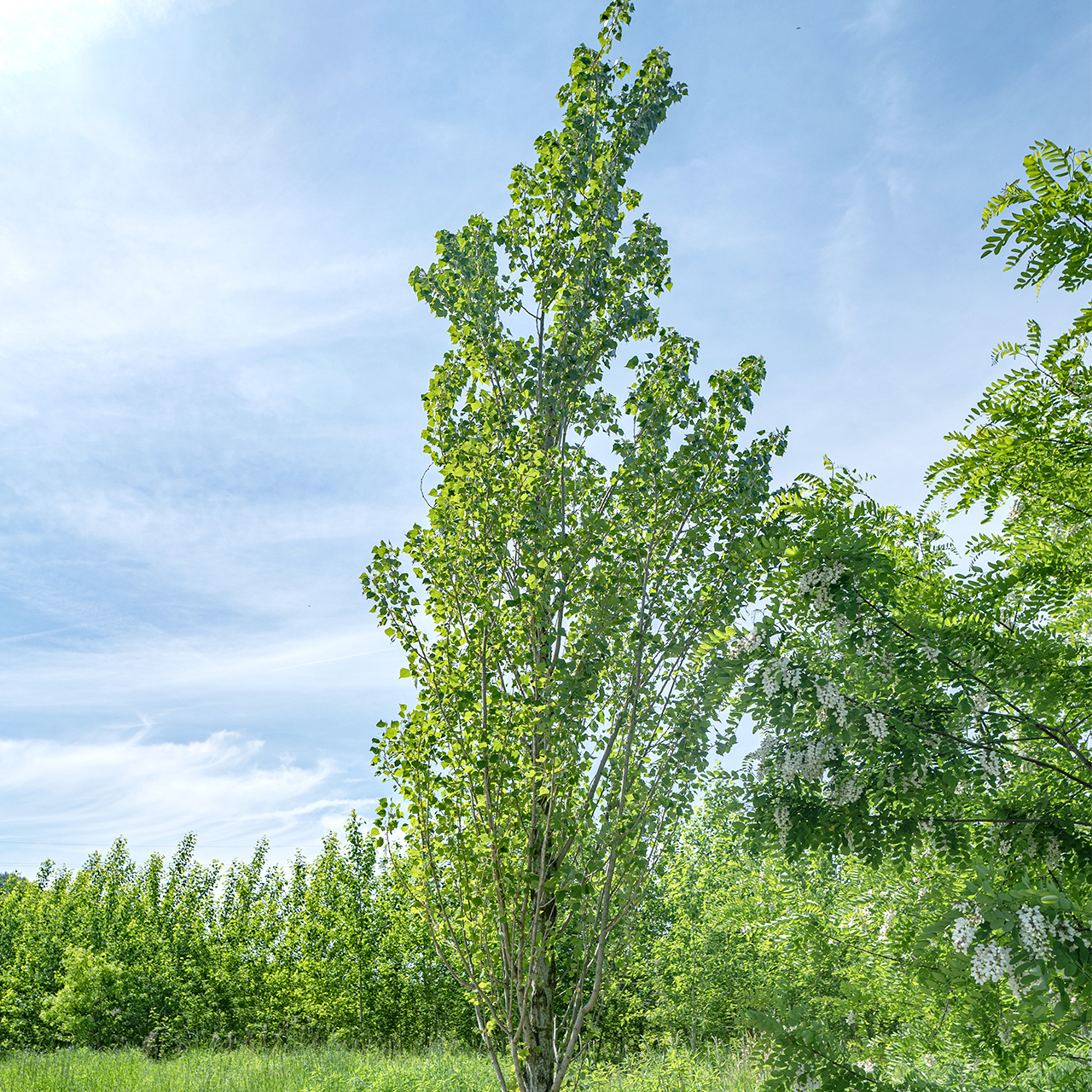Lombardy poplar
A balancing act between heaven and earth: The Lombardy poplar, also commonly called black poplar, grows up to 30 metres in height. Its branches reach for the sky, while its deep roots burrow into the ground. In many cultures, it represents change, renewal and growth. The cultivar, which originates from Italy, came to Germany around 1760 and now adorns countless gardens and parks. It quickly enjoyed great popularity in the Ruhr region in particular because it is one of the few tree species that easily adapted to the unfavourable environment in the days of heavy industry. Because it grows so quickly, it has been used for centuries to protect areas where there is a risk of flooding.
Lombardy poplar (Populus nigra ‘Italica’)
| Family: | Willow, Salicaceae |
| Distribution: | Cultivar, Southern Europe, the Near East and North Africa |
| Size: | 25–30 metres in height and 3–4 metres in breadth |
| Life: | Up to 50 years |
| Requirements: | Sun; it is heat-loving and wind-resistant, but prone to diseases and fungal infections |
| Soil: | Fresh to moist, nutrient-rich soils |
| Benefits: | Design element for urban spaces: four bee species depend on the pollen of the black poplar |
A coal mining district of pioneers
Whether in early epochs, the Middle Ages or the present day – the Ruhr region has changed its face many times: from a place where Germanic tribes settled to a metropolitan area; a modern European centre for industry, services and culture and the fifth largest conurbation in Europe. The foundation for this was laid by a raft of pioneers in industrial hard coal mining, including Franz Haniel, Friedrich Grillo and William Thomas Mulvany. Their strength: entrepreneurial skills and the ability to recognise business opportunities.
Carrying this entrepreneurial spirit forward into the future is an important driver behind the industrial transformation. The RAG-Stiftung, which itself has a vital interest in gaining access to successful start-ups and forward-looking innovations as part of its financial and investment strategy, launched the BRYCK innovation hub and future factory in 2022. With over 140 start-ups and 1,700 employees to date, BRYCK leverages the networking of companies, science, research and teaching to help young entrepreneurs take a promising idea and turn it into a marketable innovation.
Occasion for planting
The BRYCK Startup Alliance, which was founded in January 2025, has set itself the ambitious goal of building an innovation centre with an international appeal that will become a magnet for tech talent and start-ups from across Europe. In addition to BRYCK and the RAG-Stiftung, the universities of Duisburg/Essen, Bochum and Dortmund, as well as the Initiativkreis Ruhr economic development organisation, are also members of the Alliance. The Lombardy poplar is dedicated to the new Alliance, which was forged in the Ruhr region.
